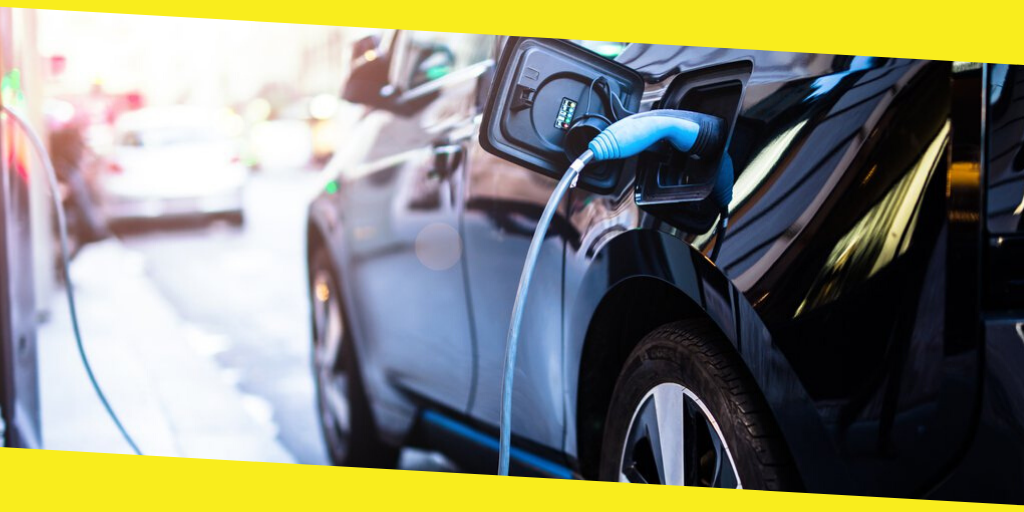How is Car Energy Changing?

Across the UK there are currently 38.4 million licensed vehicles driving on its roads and that our transport emissions contribute heavily towards climate change. Great Britain has now a 2050 Net Zero emission target to achieve, which is preserved by law, meaning the pressure is on to reduce harmful emissions entering the atmosphere from our roads, and as a result, the government have actively introduced measures to ensure we reduce our carbon footprint and tack our air pollution problem.
Though, when it comes to vehicle emissions, it’s not just climate change that is a big concern. Air pollution not only affects the environment, it also affects our health and 92% of the world’s population are living in places where the air quality exceeds the limits of the World Health Organisation (WHO). The emissions that’s produced by our transport, are having a major impact on our everyday lives and our carbon footprint is affected too. With that, it’s essential that we’re made aware of the developments and fuel alternatives that should help create a greener and healthier future for the way we drive. Together, with LPG energy experts, Flogas Britain, we explore the main ways that car energy is changing.
The Road to Zero Strategy
With our attitudes turning towards LPG Autogas and the rise of electric cars being inevitable, the fuels going into our vehicles are set to change dramatically over the next 20 years. This is mainly due to the government’s Road to Zero Strategy, which aims to end the sale of all new conventional petrol and diesel cars by 2040. The Strategy also plans to increase the supply and sustainability of low carbon fuels, as a way to reduce emissions from the existing vehicles already on our roads.
The evolution of electric cars
The concept of electric cars have been around for ages, as its purpose is to offer compelling environmental and air quality benefits. However, it was thought of as more of an idea to aspire to, rather than a serious catalyst in the fight against climate change. This has all changed in the last decade, with the development of advanced electric vehicle technology that has given electric cars mainstream credibility and appeal.
There’s no deny there has been an increase in demand of electric cars amongst generation Z drivers. Research suggests that people aged 18-24 are the most likely to own an electric vehicle, with the main reason being the climate crisis.
Despite this being promising, there is yet to be technology available to meet the infrastructure to support the upsurge of interest towards electric cars. With a chronic shortage of public charging points, one of the biggest impediments to many buying an electric car is the fear of running out of power and the risk of not being able to recharge on the go.
LPG – temporary fuel
As we wait for electric cars to invade the mass market, there are still alternative fuel options available today that offer energy efficiency and reduced carbon emissions. Autogas, also known as LPG (liquefied petroleum gas), is the most accessible alternative fuel on the market – with over 170,000 Autogas vehicles currently on the road across the UK, serviced by more than 1,400 refuelling stations.
Not only does Autogas prove a choice for many who want to reduce their carbon footprint, it’s also a good choice for those seeking to cut fuel costs compared to conventional fuels. Extensive existing infrastructure, plentiful supply and serious cost- and carbon-cutting potential mean LPG is positioned as the ideal interim fuel in the move away from petrol and diesel, and towards Net Zero.
LNG in vehicles
Whilst LPG playing an important role in our journey to achieving lower carbon emissions, there other alternatives available that give a stronger promise to reduce them. As the cleanest burning fossil fuel available, LNG (liquefied natural gas) has quickly become the world’s fastest growing gas supply source. As well as being highly efficient, it emits significantly fewer pollutants and offers CO2 savings of 20% compared to diesel, making it ideal for businesses who own large truck fleets and need to adhere to stringent air pollution controls. Bio-LNG takes this one step further, offering CO2 savings of over 80%. Also known as liquefied biomethane, Bio-LNG is a renewable fuel that’s created during the break down of organic matter, meaning it can be produced anywhere anaerobic digestion occurs (AD).
If you’d like to find out more about LPG, LNG or Bio-LNG, and how they contribute to a cleaner future, visit www.flogas.co.uk
- https://www.racfoundation.org/motoring-faqs/mobility#a1
- https://www.wlpga.org/wp-content/uploads/2018/04/Autogas-Vehicles-Catalogue-2018.pdf
- https://assets.publishing.service.gov.uk/government/uploads/system/uploads/attachment_data/file/739460/road-to-zero.pdf
- https://www.london.gov.uk/what-we-do/environment/pollution-and-air-quality/mayors-ultra-low-emission-zone-london
- https://www.london.gov.uk/press-releases/mayoral/ulez-will-start-in-2019-to-tackle-toxic-air
- https://instavolt.co.uk/aa-says-youngsters-most-likely-to-own-an-ev
- https://www.drivelpg.co.uk/about-autogas/
- https://www.shell.com/promos/overview-shell-lng-2019/_jcr_content.stream/1551087443922/1f9dc66cfc0e3083b3fe3d07864b2d0703a25fc4/lng-outlook-feb25.pdf
- https://www.ngva.eu/medias/natural-gas-a-solution-for-a-clean-and-decarbonized-transport-system/
Transport applications; compared to conventional diesel engines (source: NGVA)
You may like this
Recommended For You
Elevate Your Drive: The Ultimate Performance Upgrade
Most Inside
Most Inside offers high-quality recommendations and valuable updates to enhance all aspects of your life, providing premium guidance and enriching experiences.




